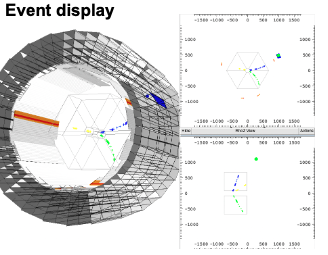Speaker
Description
The behavior of kaon and anti-kaon in dense matter is an important topic, as their nature is closely related to symmetry breaking in low-energy QCD.
The interaction of kaons and anti-kaon with nucleon has been extensively studied with various experiments.These studies found that the Kbar-N interaction in the isospin I=0 channel is sufficient to produce the quasi-bound state Λ(1405).
This strong attractive interaction predicts the existence of a bound state known as a kaonic nucleus.
In particular, Kbar-NN is gaining attention as the simplest kaonic nucleus.
Recently, a clear peak has been observed in the E15 experiment. So there is growing interest in the properties of Kbar-NN.
In this presentation, I will discuss the studying of Kbar-NN in the ongoing hadron photoproduction experiment known as the LEPS2 solenoid Experiment and compare it with previous experiments.The LEPS2 solenoid experiment is a project aimed at investigating various hadron photoproduction reactions. It uses high-energy and high-intensity gamma beam and the solenoid spectrometer that covers large angles. The experiment is carried out at SPring-8, one of the large synchrotron radiation facilities in Japan.
Since 2022, the LEPS2 solenoid experiment has collected the physics data.In my talk,I would like to report on its current status and expected future results.

